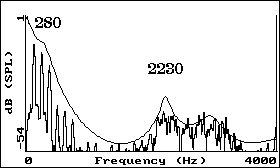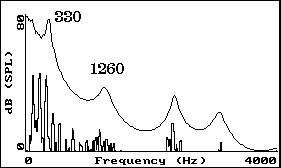Choosing a brand voice isn’t the most straightforward task in the world. Although you might know you want your message to communicate certain key points, deciding how best to get them across is a whole different ballgame. One of the most confusing aspects of this process is understanding the distinctions between the male vs female voice and how to make the most of each one’s strengths.
Does the Male vs Female Voice Really Differ That Much?
Although we all know that each person has their own unique sound, we also know that there are only so many sounds to choose from. After all, human ears can only hear so many different auditory frequencies. We’re limited to the relatively small 20 Hz to 20,000 Hz range, with 1 Hz meaning one vibration per second. This pales in comparison to animals like whales, bats, dogs, and birds, which can detect significantly higher noises. How do we get so much variety out of so little range?
The answer lies in the fact that human voices are defined by their complexity. Without getting too much into physics, it’s enough to say that voices are composed of multiple sounds. Each one contains distinct frequencies that act in harmony to produce a recognizable overall tone.
Let’s take a look at a graph — everybody’s favorite pastime. In the following image, the colored areas indicate the presence of different audio frequencies.

Do you notice anything special? Instead of just producing a single band around one frequency (top to bottom), the voice includes multiple ripples at each point in time (side to side). These distinct pitch elements also contribute to gendered voices, but we’ll need to dive a bit deeper to get the true meaning.
This post was updated in May 2021
Fundamentals, Formants, and Frequencies, Oh My!
There are many components to voice sounds. Although we won’t cover them all here, going over three in brief can help clarify why female and male speakers sound distinct.
Frequency, or pitch, is the rate at which the human voice oscillates. Fortunately, you don’t actually need to measure it — We intuitively recognize it when we talk about whether someone’s voice is high or low.
Formants are typically taken to denote the harmonics, or prominent high frequencies, present in a speaking or singing voice. If you consider the many different tones in a single human voice, then these are the peaks of the highest intensity. Formants are important in linguistics because they determine how vowels sound. These two graphs from the University of Manitoba show the difference between the formants (look for the pointy, numbered peaks) in two Canadian English vowels — i and u — spoken by the same person:


A fundamental is the lowest frequency of a voice or other sound source. If you’ve ever plucked an open guitar string without pressing it down on the fretboard, the fundamental is what you heard. Although people (hopefully) don’t go around plucking at each other’s vocal cords, the idea is the same. A fundamental can also be referred to as the first harmonic, which makes sense considering that the other prominent frequencies, such as the formants, are all higher.
Are you feeling a bit confused? The simplest way to keep it straight is to remember that formants and fundamentals are just different types of frequency clusters, or groupings, found in a single voice.
What do you get when you put the various frequencies together? The combination is commonly called the timbre of a voice. This is the overall sound, and our brains blend everything up to extract a recognizable tone when we hear people speak.
Male vs Female Voice Characteristics
A speaker’s physical characteristics determine the normal timbre of their voice. Think back to the guitar string example. Even without doing the math, most people intuitively recognize that a longer string produces a lower note than a shorter one held at the same tension. The throat is similar because different individuals have vocal cords, also known as vocal folds, of varying lengths.
The Frequency Distinctions
Most females produce higher speaking and singing tones than males because they have shorter vocal folds. Looking at the fundamental frequencies and upper harmonics of average voices shows the differences pretty clearly:
- Female voice fundamentals may range from around 350 Hz to 3,000 Hz. Their harmonics go from 3,000 Hz to 17,000 Hz.
- Male vocal fundamentals start at 100 Hz and top out at about 900 Hz. Their harmonics stretch between 900 Hz and 8,000 Hz.
Historically, researchers had to use some pretty hefty theory and scientific equipment to determine these ranges. Once again, however, they make a lot of sense if you’ve listened to enough people. If you’re particularly observant, you may have also noticed that these rules vary throughout people’s lifetimes. For instance, crying infants exhibit an eardrum-shattering, high-pitched 500 Hz fundamental, but as they get older and their vocal folds lengthen, their voices drop. Naturally, most children wind up somewhere in between babies and adults.
What Kind of Male or Female Voice Fits You?
Why is it worth knowing how voices differ? Being in the know makes you a better marketer because you can more easily specify how your brand should sound. When selecting voice actors, it’s crucial to be proficient at determining what you want.
The human voicebox is pretty amazing — male and female voices can both span a broad spectrum. For instance, though many people automatically describe male voices as authoritative, talented women, such as Scarlett Johansson, produce similarly confident tones. While many adults who perform characteristically young voice roles are women, some men can also create excited, bubbly high voices, such as SpongeBob Squarepants’ Tom Kenny. Such variance is all thanks to the fact that male and female voices have many other defining qualities:
- Inflection is the way people curve or bend their vocal frequencies while vocalizing. For instance, some individuals uptalk, or raise their pitch, at the end of sentences as if they were asking questions.
- Registers describe the frequencies that people use to speak at lower and higher pitches within their vocal ranges. The most common registers are the deep chest voice, the higher head voice, and the normal, or modal, voice, which is a casual mix of everything. Other less-prevalent speaking registers include the falsetto, soprano-singer-like whistle register, and the iconically low, creaky vocal fry favored by some celebs.
- Articulation describes how people move their tongues and mouths to form specific sounds. For example, you may have observed someone who speaks with notable clarity being referred to as “articulate.”
Inflection, register, and articulation, along with other vital speech components, such as pacing and rhythm, are things that people consciously control. Amazingly, they often make a more significant impression on a listener than frequencies alone. In other words, it’s essential to add these descriptors to your creative hiring specifications — not just extra credit.
Avoiding Biases in Choosing a Male vs Female Voice Actor
We’ve all had the experience of meeting someone who had a voice we didn’t really expect. Whether it’s higher or lower than what we thought we’d hear, however, most of us are usually more than willing to accommodate. This is an excellent golden rule to apply when you’re picking voice actors — always be open to the uncommon.
People often like to make snap judgments about male vs female voices based on their preconceptions. Smart marketers, however, always remember that everyone is different. In other words, saying that you want a female or male speaker and leaving it at that isn’t as effective as describing the voice in fine-grained detail.
Sometimes, it might pay to try a different approach and see what sticks. For instance, some screenwriting tools include analysis features that tell you how much time your scripts devote to having characters of different genders speak. Asking your voice actors for their input is also an intelligent strategy.
Why does it matter how inclusive your outreach is? There are many good reasons. For starters, marketing exclusively to one gender or limiting yourself to one brand voice might turn some audiences off. Also, it’s not always good to pick a single tone because different marketing materials and campaigns might call for variety.
Finally, you might get more for your marketing money by exploring characteristics such as register, articulation, and inflection. On top of asking actors to try different things, you can find multiple gendered voices with similar personalities. This is a smart way to create a consistent brand voice that welcomes all comers.

Should you choose a female or male voice actor or narrator for your content?
How can you determine what might best suit your brand? Instead of just deciding between male vs. female, focus on the actual roles in question and what people respond to the most favorably.
Suppose that you recorded two versions of the same ad read by differently gendered narrators. Running both promos and gauging the feedback could help you determine which option was best for your brand going forward.
Now imagine that you developed a fantastic product, but that it was only intended for adult female use. If your usual narrator was a man, would you want to switch for the new commercials? In such a case, it might be smart to at least go back to the focus group stage to avoid negative pushback.
What if you were switching countries in a quest for brand footprint expansion? Thanks to social customs, a given male or female voice discussing a specific product might sound odd in some cultures. This isn’t to say such a move wouldn’t work, just that you need to consider the impact ahead of time.
Demographic data is everything, but marketing isn’t always a one-to-one relationship. For instance, we’ve blogged before about how different people associate gendered voices with varying types of products and services. On the other hand, this isn’t always due to different speakers’ natural vocal qualities. A lot of it simply boils down to tradition and what people are used to hearing. In addition to breaking the mold for its own sake, setting yourself apart can help distinguish you from your competitors.
Male vs Female Voice Actors in Summary
Typical male and female voices have many different distinguishing traits. Some of these qualities are innate or related to physical characteristics. Others vary to reflect a voice actor’s mood and the content they’re portraying. Since increasing numbers of consumers are concluding that voiceover gender doesn’t matter, it’s wise to take it on a case-by-case basis. In the end, a particular voice actor’s talent and ability to convey a specific feeling is the most critical branding factor.
Looking for the perfect voice-over for your project? Submit a project and hire a Bunny Studio Pro in minutes!











